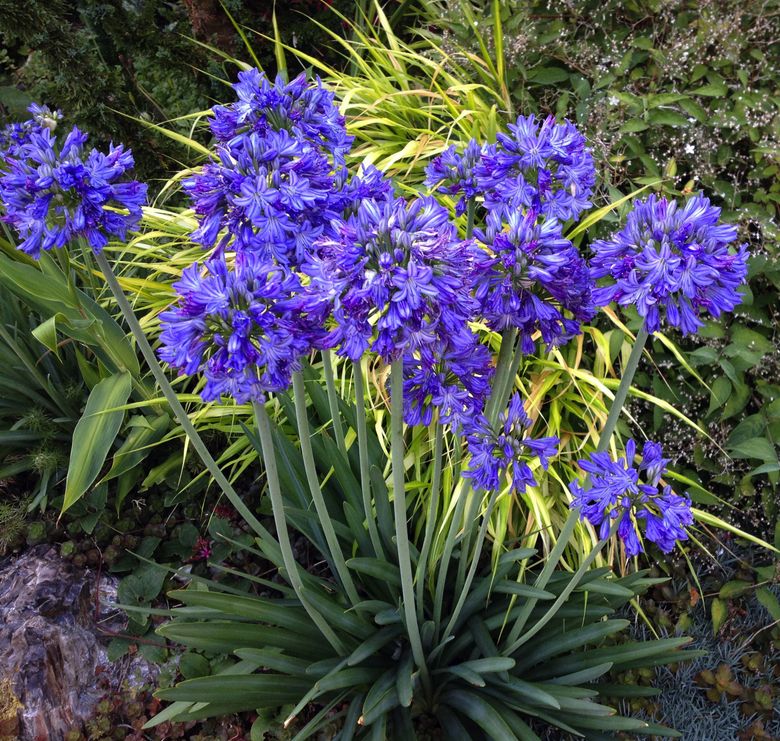Common Agapanthus Troubles and Just How to Fix Them
Common Agapanthus Troubles and Just How to Fix Them
Blog Article
Grasping the Art of Agapanthus Treatment: Necessary Steps for Healthy Growth and Lively Blooms
In the world of gardening, the cultivation of agapanthus stands as a satisfying endeavor for those that look for to nurture these classy flowering plants. With their striking flowers and stylish vegetation, agapanthus has actually recorded the focus of garden enthusiasts worldwide. Nevertheless, attaining optimal development and dynamic blossoms requires a nuanced strategy that incorporates various crucial steps. From choosing the appropriate variety to grasping trimming strategies, the journey towards growing flourishing agapanthus plants is multifaceted and holds the key to unlocking the complete possibility of these botanical gems.

Selecting the Right Agapanthus Range

When picking the best Agapanthus selection for your yard, think about aspects such as environment suitability, flower color, and development practice. In addition, take into consideration the climate in your region to make certain the Agapanthus variety you choose can grow in your certain conditions. Comprehending the development practice of various Agapanthus selections is important for appropriate positioning within your yard.
Perfect Growing Problems
Taking into consideration the optimal environmental requirements is crucial for effective Agapanthus growing. Agapanthus flourishes in well-draining dirt with a slightly acidic to neutral pH level. When growing, pick a location that gets full sunshine to partial shade. In hotter environments, providing some mid-day shade can protect against scorching of the fallen leaves. Agapanthus plants are sensitive to cold temperature levels and should be secured from frost throughout wintertime months.
To ensure healthy and balanced growth and vivid flowers, plant Agapanthus light bulbs at a depth of regarding 2-4 inches and room them 8-12 inches apart. Adding organic matter, such as garden compost, to the dirt can boost drainage and fertility, promoting durable origin growth. Mulching around the base of the plants helps keep moisture and suppresses weed development. Regular watering is essential, particularly during the expanding period, to keep the soil constantly damp however not soaked.
Watering and Feeding Tips
Keeping proper moisture degrees and supplying important nutrients are crucial components in the treatment routine for Agapanthus plants. It is critical to strike a balance when it comes to sprinkling Agapanthus. If overwatered, these plants prefer regularly wet soil but are vulnerable to root rot. During the expanding period, water deeply once a week, ensuring the dirt is well-draining to stop waterlogging. In hotter climates or throughout durations of dry spell, even more constant watering might be essential to maintain the soil equally damp. Nonetheless, reduce watering in the winter months to stop waterlogged problems.
Feeding Agapanthus is essential for advertising healthy growth and prolific flowers. Use a well balanced plant food, such as a 10-10-10 formula, in the early springtime as new growth arises. By adhering to these watering and feeding tips, you can guarantee your Agapanthus plants flourish and generate vibrant, lasting blossoms.
Trimming Techniques for Agapanthus
Pruning Agapanthus plants at the ideal times and with proper methods is critical for maintaining their wellness and advertising optimum growth and flowering. The suitable time to prune Agapanthus remains in late winter or early spring prior to new development emerges. Start by removing any dead or yellowing fallen leaves near the base of the plant. Cut them as close to the ground as feasible without damaging the emerging shoots.
Deadheading invested blossoms can also reroute the plant's power right into producing more blooms instead than establishing seeds. If you want to accumulate seeds for propagation, leave some flowers to mature and dry on the plant.
Remember to utilize clean, sharp devices to make specific cuts and lower the threat of introducing diseases. Agapanthus. Normal pruning will published here aid maintain your Agapanthus looking cool and healthy and balanced while ensuring a plentiful display screen of attractive blossoms
Handling Common Parasites and Illness
After ensuring correct trimming methods for Agapanthus, it is necessary to address common bugs and diseases that can impact the health and vigor of these plants. One typical insect that influences Agapanthus is the Agapanthus gall midget.
Another typical concern is fungal leaf area, which presents this as dark sores on the leaves. To avoid fungal conditions, ensure great air flow around the plants, stay clear of overhead watering, and get rid of any infected fallen leaves immediately. In addition, Agapanthus plants can suffer from root rot if they are grown in badly draining pipes dirt. To avoid this, plant Agapanthus in well-draining soil and stay clear of overwatering. By being attentive and taking punctual action against diseases and insects, you can assist your Agapanthus plants grow and generate vibrant blooms.

Final Thought
Finally, grasping the art of agapanthus treatment involves choosing the best range, supplying optimal planting conditions, appropriate watering and fertilizing, ideal trimming strategies, and resolving typical parasites and conditions. By complying with these crucial official statement steps, you can make sure healthy development and vivid blossoms for your agapanthus plants. Keep in mind to on a regular basis keep track of and preserve your plants to advertise their general health and durability.
To make sure healthy development and dynamic blooms, plant Agapanthus light bulbs at a depth of concerning 2-4 inches and room them 8-12 inches apart. By following these watering and feeding suggestions, you can guarantee your Agapanthus plants thrive and generate lively, long-lasting flowers.
One usual parasite that affects Agapanthus is the Agapanthus gall midget. Additionally, Agapanthus plants can suffer from root rot if they are planted in badly draining pipes soil. By following these essential steps, you can make sure healthy and balanced growth and vibrant flowers for your agapanthus plants.
Report this page